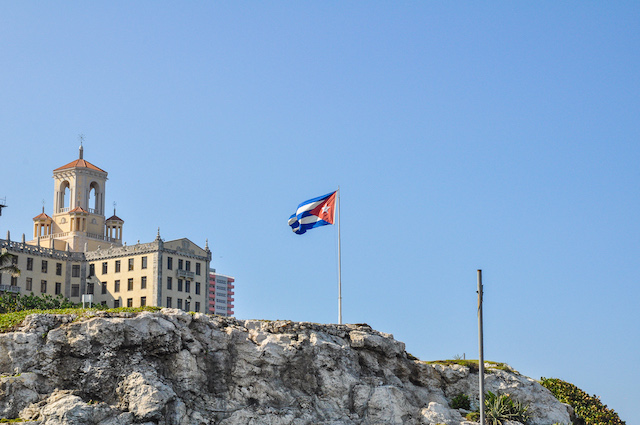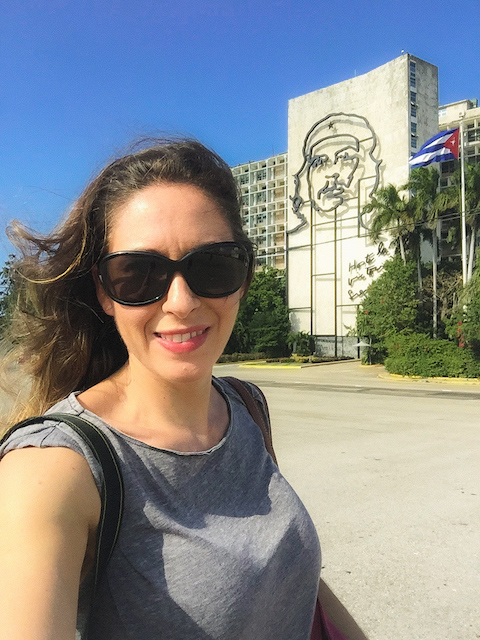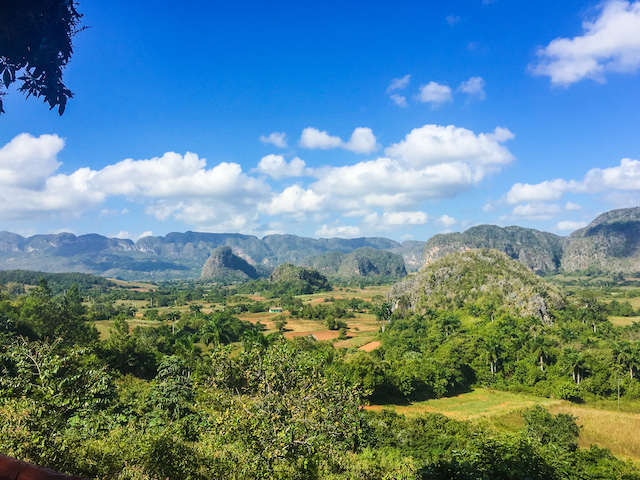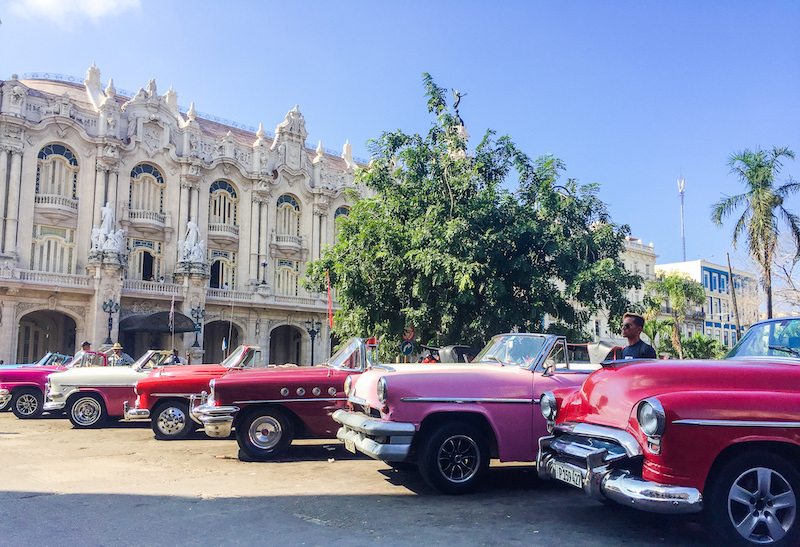Hard Truths:
- High premium paid for tours
- Tour Operators can change itineraries without notification
- Cuba charges a 10% “tax” on USD
- There are no ATMs and no foreign credit cards are accepted
- Extra high costs for Americans
- Hotel standards do not follow international criteria for ratings
- Vintage cars can mean just very old
Tobacco farmers need to give back 90% of their crop to the Cuban gov’t
Can’t Miss:
- Havana night life: Fabrica del Arte
- La Guardida (reservations needed)
- Galleries & Artists of Havana
- Tobacco plantations to support farmers
- Trinidad UNESCO site
The stigma and elusiveness around Americans traveling to Cuba continue to make it a very intriguing and desirable destination for the avid American traveler. It is already a popular spot for other nations like Canada and the UK and has always been on my bucket list. That’s why as soon as the borders opened up for Americans, I started looking into my trip. When I went, you needed a reason to travel there such as a cultural exchange or learning Spanish. But it was easier to book than expected, and it was a non-event at the airport. I handed in my affidavit at the Delta counter with no questions asked and was on my way.
Cuba charges a 10% “tax” on USD, and since they don’t have ATMs or accept credit cards, my friend and I figured it would be easier to book a custom tour package ahead of time so everything was paid for, and we didn’t have to carry cash (to note: take GBP or EUR, which get a better exchange rate than USD). We went with a travel company based in Miami called AC Journeys. A few friends have been already, so we had an idea of what we wanted to do, and AC worked with us to accommodate our requests, or so we thought!

We had worked with the travel agency for months before our trip to plan out everything we wanted to do. We even had to pay for everything in full 2 months ahead of time. When we got the final itinerary we were so excited, everything sounded so glamorous (insert Ominous music here). Our itinerary started with the following: Upon leaving the plane you will be met by our Cuba concierge and representative who will guide you through customs into the VIP lounge to wait for your luggage to come out. Instead, we landed to find no one there and no lounge. We finally found a tour rep from the travel agency after we got our luggage and exited the airport. He went over the full itinerary and unbeknownst to us a number of agreed-upon bookings had been changed. This was not a great start to our trip, to say the least.
We spent the next hour arguing with the travel agency to get the most important parts of our trip rebooked. The first was a tour of Havana in a vintage car, which we were really looking forward to. Luckily, our airport pickup was a 1959 Hot Pink Chevy Impala convertible so we were able to start our holiday off in vintage Cuban style. And they agreed to use this car for a mini-tour of the city.

Our first stop was Plaza de la Revolución which was also our first introduction to the ideology of Che Guevara. Walking around Havana his presence seems to fill the air. His image is plastered all around the city and dominates all of the tourist shops.

We continued to drive around the city seeing a few different neighborhoods. It felt like we had been transported back in time with the plethora of vintage cars lining the streets and dilapidated buildings. We ended at the Hotel Nacional for our 1st mojito in the gardens. This is where Al Capone and crew used to party during prohibition. We also found out that below us was Fidel Castro’s headquarters during the Cuban Missile Crisis of 1962. You can go down to the bunkers and see for yourself. They were small and pitch black so no photos, sorry! And a word of warning, they are not for the very tall or anyone claustrophobic or scared of the dark!!
Our hotel, the NH Capri La Habana, was up the block from the Hotel Nacional, so a good location but really all that was good about it. It’s deemed a 4-star hotel and was apparently refurbished in 2014. We came to realize the rating system was relative and not up to international standards. The hotel was very dated, definitely pre-2014, and the rooms were dark and dingy with iffy electricity. We also came to find out there is a surcharge specifically for Americans especially on the hotels. I’m not sure how this works but either way would recommend an Air Bnb instead or trust Beyoncé and go with the Hotel Saratoga. The only other decent part of our hotel was the nice views from our room.
Our first evening made up slightly for the rough start to our trip. We went to see a performance of the Buena Vista Social Club. They are probably the most famous Cuban music ensemble made up of some of Cuba’s most renowned musical forces. Their self-titled album was an international best-seller and the most successful album in the history of Cuban music. As the NY Times puts it, “As both a music and commercial phenomenon, “Buena Vista Social Club” has turned out to be a complexly layered symbol and expression of rediscovery, vindication, historical memory, translation, nostalgia and Cold War politics.” They play at a few different venues throughout Havana. We went to see them at El Tablao de Pancho part of El Guajirito restaurant. They definitely put on a good show! Another show recommended to us was the 1950s style Cabaret at El Tropicana. We sadly didn’t make it which I regret as it’s supposed to be a great performance.
The next day our ‘tour’ started. We met our guide, Orlando, who would be with us for the duration of the trip. He turned out to be really great very knowledgeable and helpful throughout the whole trip. He brought us to our ride for the week, a 1960 Buick Le Sabre, another vintage car which we would regret later. Towards the end of our trip, the faithful Buick broke down. We were stuck in a small town on our way to our next destination. At one point, I glanced into the engine while it was being worked on to see plastic ties holding it together! Sometimes vintage actually just means old, lol. We had to wait hours and finally ended up getting a taxi to take us to our next destination. The Buick was apparently fixed by the next day but I was worried it would breakdown again for the rest of the trip!
Orlando took us around Havana to see everything the city has to offer. We spent most of our time in Old Havana, a UNESCO World Heritage Site. This area is home to the Museo de la Revolución which shows a very thorough timeline and depiction of Che’s revolutionary efforts. It was really interesting so worth a visit if this appeals to you. We then did a walking tour of the four main colonial squares which each mark a time in history. There is Plaza de Armas, Havana’s birthplace and oldest square. Plaza de la Catedral which has, you guessed it, Havana’s main Cathedral and the last square built. Plaza de San Francisco de Asís, the 2nd oldest square which used to be home to a convent. Plaza Vieja, the 3rd oldest and first planned attempt to extend the city. This one is pictured below and was surprisingly once a parking lot! There used to be a marble fountain in the middle that was demolished in the 1930s when the then-president decided to build an underground parking lot. Once Old Havana was declared a World Heritage site, in the early 1980s, a restoration of the square began. It’s definitely worth a wander around all of these squares along with a stop to have a coffee on one of them.
Our 3rd day/night was focused on art. We went on a local artist tour which was very cool. We went to emerging artists’ homes, some of which were students at Havana´s Higher Institute of Art. It was a very up close and personal experience. We met the artists and got to see some of their new pieces including some works in progress. We were even given a glimpse into some of their creative processes.
Our evening was spent at the hottest spot in town, Fabrica de Arte Cubano (FAC), which is a gallery and music space. It’s even been listed on Time’s World’s Greatest Places. There are indoor and outdoor spaces where you can grab a cocktail and wander around the different exhibitions while stopping along the way to listen to some live music. This was my favorite part of the whole trip.
The next day we headed to the countryside, Viñales Valley, a Unesco World Heritage Centre, in Pinar del Río province, also known as the capital of tobacco. We were excited to get to see where the infamous Cuban cigars were made. The landscape in the valley is touted as one of the most unique ones in the world by the tour guides as it’s made up of cone karsts, which are basically limestone hills. These can actually be found in a few other spots such as those in Guilin, China and Bohol, Philippines. They are worth a quick stop if you’ve never seen them before though.

There were a few more stops along our drive and looking back it felt like they were just trying to find every little spot possible to show us in order to fill the day. They wanted to take us to an underground river and a cave tour which we were not keen on. There were a few other stops we had no interested seeing as well so I’d recommend doing some research ahead of time to figure out what you actually want to see. One stop we were looking forward to was to a rum and cigar factory. This was in the city of Pinar del Río where we were supposed to get a tour of each, yet another fail. The cigar factory we rocked up to ended up being closed, no one from the travel agency bothered to confirm if it would be open. And the rum factory we went to was a waste of time. We were brought into a room to look at a bottling machine and then trafficked into a shop.
The Viñales Valley is designated as a World Heritage Centre not only due to its unique landscape but also as Unesco states due to the “traditional methods of agriculture that have survived largely unchanged on this plain for several centuries, particularly for growing tobacco.” To this day these methods such as using horses, ox-drawn ploughs, and human hands are still doing much of the work. This was something we were looking forward to seeing on our visit to one of the many tobacco plantations. We were only slightly disappointed with this excursion. We went to a plantation that was void of tourists so that was a huge plus. But the promised walk around the plantation did not happen. We didn’t get to see any of the traditional farming methods the area is known for and got no info on how the tobacco was grown and cultivated. We did get a private tour in one of the traditional thatched roof drying tents. We were able to see fresh tobacco leaves drying out and got a cigar rolling demo by one of the farmers with a cigar to take home. As mentioned in my hard truths section the tobacco farmers have to give back 90% of their crop to the Cuban government who owns all the big producers such as Cohiba, Montecristo and Romeo y Julieta so make sure to buy some of the no-frills cigars sold at the farm to support the locals.
After our long day, we finally arrived in the town of Viñales. There isn’t much there so it’s not really worth spending a night. I’d recommend doing a day trip from Havana to see the valley and a tobacco plantation instead.
We were booked at a “high-standard” B&B (or casa particulares). This was yet another disappointment. It was a room in a small house which would have been fine if that is what was described and what we paid for. The going rate for these rooms at the time was $30/night and up to $50 at a stretch according to friends who had stayed before us. The travel agency charged us $150 for the night! This was added to our many complaints sent to them at the end of our trip for sure.
Next up was the town of Trinidad. And unsurprisingly we had a few stops along the way. One notable stop was the city of Cienfuegos. This city is one of the top seaports of Cuba and the center of the sugar, coffee, and tobacco trade. Its historic center is also a Unesco World Heritage Site. It was founded by French immigrants made up of neoclassical buildings and the Muelle Real pier. It’s pretty small with not much to see or do so make your visit a short one.
Trinidad, a Unesco World Heritage Site, is known as one of the best-preserved colonial cities in the Caribbean. The city was at one time the richest in Cuba due to its integral part of the sugar trade. Its historic cobblestone streets and colonial squares feel frozen in time. They are all in such an immaculate state you would never even know they were built hundreds of years ago. You can spend the entire day walking through the maze of cobblestone streets and pastel buildings but save some energy for the nightlife too. One of the best spots to see some live music is in a small square near Plaza Mayor, outside the Casa de la Música. Local bands play to crowds sitting along the stairs lining the square. There’s a small bar so you can grab drinks as well. It’s a pretty cool scene. If you’re feeling more adventurous you can head to an underground nightclub, Disco Ayala or La Cueva as the locals call it. It’s literally in a cave!
The city also has its own trademark drink, the Canchanchara. It’s been called the grandfather of the mojito and is pretty similar without the mint, it’s just honey, lime juice, soda water and rum, very tasty. And the best place to try one is at, wait for it… La Canchanchara! There is a cool garden where you can sip away and listen to tunes from a live band.
The last stop before our final night back in Havana was to the beach in Varadero. We figured we’re in the Caribbean so the beaches have to be gorgeous. We were right in terms of the actual beach but the resorts not so much. There were only all-inclusive resorts when we were there and not great ones. There was a lot of construction going on so maybe by now there are some better ones but if not I’d give Varadero a miss. The resorts and beaches are incomparable to the rest of the Caribbean. They were priced as 5 stars but were 3 stars at best. The food was only buffet-style and also sub-par. The worst part was the travel agency failed us yet again. We arrived at the resort we were booked at only to find out they had changed the resorts on us without telling anyone. We spent over an hour contacting the tour operator to figure out what was going on and then had to wait to get reconfirmed at another resort which looked to be a lower class as well. All added to the list of complaints we handed them when we returned from our trip.
Our last night was back in Havana with a stop at the best restaurant in town, La Guarida. We were fortunate to get a last-minute reservation after the travel agency wasn’t able to confirm the one they had promised before our trip. It happens to be the most famous restaurant in the city and a celebrity hot spot. We saw the American actor Danny Glover as we were being seated. And one of its claims to fame is the Annie Liebowitz photo of Rihanna from a cover story in Vanity Fair. It had a great vibe, you’d easily mistake it for a trendy restaurant in a big cosmopolitan city like NY or London. And the setting is just as cool, it’s housed in an old mansion. It looks like it’s falling apart which is perfectly in line with the rest of the city but its state still gave it charm. You can still make out murals of Fidel and the revolution adorning the walls. And the food definitely lived up to all the hype. This place was by far the best meal we had in Cuba.
Overall, the food in Cuba, in my opinion, wasn’t as good as expected. We tried all the restaurants we had been recommended and were disappointed each time especially after having such great Cuban food in the US in places like Miami. La Guarida was a refreshing surprise to end our trip. But the bars of Havana were another story, some pretty touristed but still did the job. The best spot undoubtedly was Fabrica de Arte. However, Ernest Hemmingway had a few great watering holes. He lived in Cuba for almost 20 years, so he knew the lay of the land well. I really liked Hotel Ambos Mundos, La Bodeguita del Medio, El Floridita’s and Sloppy Joe’s to name a few.
I had very mixed feelings about this trip. Most of them were tainted by the awful experience on our tour and the interactions with the travel agency. They did make it right in the end by refunding us a good amount of money but I’d definitely recommend staying clear of tour packages and booking everything on your own. I’ve heard local tours are really good like the Havana Tour Company which offers day tours. Looking back I also don’t think we needed a guide/driver for the full duration but it was nice to have them during parts of the trip.
Don’t Forget:
Havana
Hotels: Hotel Saratoga, Hotel Nacional or Air BnB
Restaurants – La Guarida, El Chanchullero, El Cociner, La Cocina de Lilliam, Dona Eutima, San Cristobal, Los Mercaderes, L’Esperanza, Rio Mar, Café Laurent, Café Solás, O’Reilly 304 , Divino (farmhouse outside city)
Bars – Fabrica de Arte, Hotel Ambos Mundo, La Bodeguita del Medio, El Floridita’s, Sloppy Joe’s, El Patio at Hotel National, Trocadero, Don Cangrejo, Café Taberna, El Guajirito, El Tropicana, Sangri-La, Espacios
Museums/Sites –
Museo de la Revolución, Museo Nacional de Bellas Arte, Fortaleza de San Carlos de la Cabaña, Colón Cemetery, FincaVigía (Hemingway House), Cayo Hueso (artsy neighborhood), Bacardi Building, Fusterlandia

